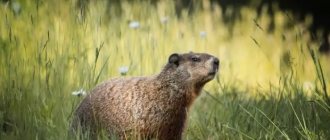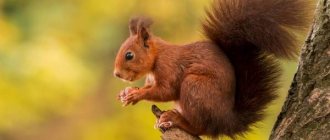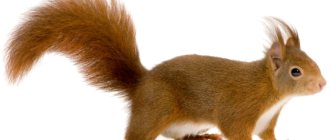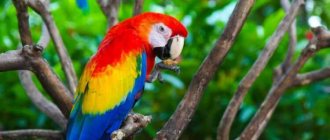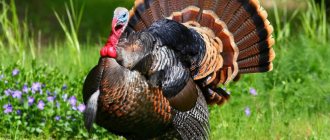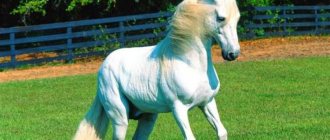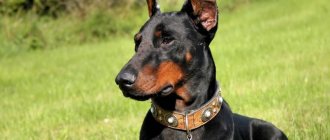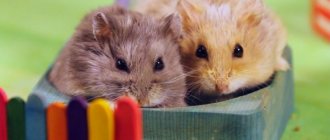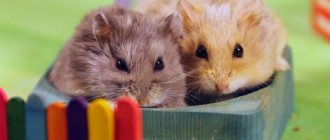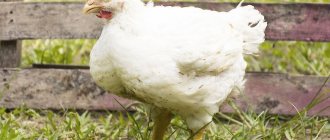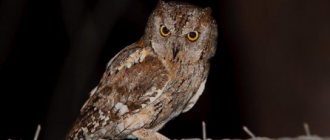A pig is an animal of the class mammals and the pig family.
Scientists claim that this animal received its name because of its exceptional fertility. After all, the word “pig” comes from the ancient Latin word “fruit bearing”.
External characteristics of a domestic pig
The pig has a cylindrical body. The head is triangular in shape, at the tip there is a nose made of cartilaginous tissue with two round nostrils. It is able to stir up the soil in search of food. The eyes are small, oval-shaped on the sides of the head. Ears with pointed ends.
A photo of domestic pigs shows a tail that does not perform any functions. He drove away small gnats from wild animals.
The animal belongs to the artiodactyl family. White and pink colors are often found. The color depends on the breed of pig. The body is covered with thin bristles.
The large jaw has two rows of teeth. The lower canines are well developed and curved upward.
The sense organs are well developed, with receptors on the mucous membrane of the tongue, the pig distinguishes the taste of food. With the help of smell, the animal distinguishes between its cubs and the quality of food. Hearing is well developed, vision and touch are poor.
The largest specimens grow up to 1.5 meters. The weight of a domestic pig reaches 150 kg. The average size is smaller, weighing from 50 kg, directly depends on the breed.
Factors for choosing piglets for fattening and breeding
When choosing a breed, you should not rely only on characteristics, even if they turn out to be tempting and promising. The qualities of the animal must be considered in conjunction with the following criteria:
- climate of the breeding area;
- the possibility of arranging infrastructure for breeding;
- availability of necessary feed.
Based on their characteristics of a particular breed, it is necessary to calculate the economic feasibility. It is calculated in the ratio of expenses to income.
When choosing meat pigs, you also need to consider the following nuances:
- many varieties require complex care and feeding. For example, Landrace pigs absolutely cannot stand stressful situations and are picky about feed, and Vietnamese pigs are susceptible to strong drafts;
- The higher the quality of the food, the higher the quality of the meat. It is best to select concentrates rich in minerals and vitamins for meat breeds;
- sows do not have large volumes of milk to feed piglets, so their feeding depends 40-50% on the owner;
- Meat breeds are easily crossed, and the litter absorbs most of the positive qualities. For example, litter from Landrace and Duroc gives an increase in quality meat with easier maintenance.
Rules for purchasing piglets
The selection of piglets and their transportation is a responsible event, which will greatly affect further care and the process of gaining meat mass.
It is best to purchase piglets in your region , as this will save them from long travel and subsequent stress, in addition, the piglets will be more prepared for specific climatic conditions - acclimatization will not be required.
However, it is best to purchase piglets from special pig farms for a number of reasons:
- Hundreds of piglets are sold at the breeding plant, which opens up wide prospects for choice;
- The development of piglets on farms is carried out in accordance with all the rules and nuances. The actual weight of piglets corresponds to the calculated ones;
- Young animals are required to be vaccinated. Upon purchase, you can receive all relevant certificates.
Experienced pig breeders have no problems when choosing a pig, but beginners should adhere to the following recommendations regarding the appearance of the animal:
- eyes and ears should be clean, teeth intact without plaque, and the oral mucosa should be pink;
- the stubble evenly covers the body;
- breathing is even, no wheezing or snuffling is heard;
- high activity, mobility and good appetite.
In healthy piglets, the tail always sticks up.
It is recommended to purchase piglets in the spring , and individuals with average body parameters : small ones are often weakened, and large ones may have vegetative or genetic abnormalities. The most sought after piglets are those with upturned snouts and long legs.
If piglets are selected for breeding, then it is strictly not recommended to purchase individuals from the same litter. When crossed, the offspring will come out sick, weakened, and in addition, conception will be difficult.
Diet of a domestic pig
Includes millet, barley, grass, boiled potatoes, beets, pumpkin, carrots. The quality of meat and lard is positively affected by the consumption of vegetables and grains that have a high protein content. Soy feed and oats lead to yellowing of lard and flabby meat.
The food must be balanced, provide enough protein for the growth and development of the animal, vitamins and minerals. Leftover food from people, meat trimmings, these products are what is fed to domestic pigs. Animal teeth easily grind hard foods.
Nuances and rules of cultivation
There are a number of nuances, the observance of which guarantees high results in meat pig farming:
- The pigsty should be clean and spacious. Dirt and cramped conditions are the main causes of unsanitary conditions;
- walks are required, since during active walks excess fat is burned, and the food supply is enriched by obtaining vitamins from the natural vegetation inside the paddock;
- if meat is being prepared for sale, then it is necessary to carry out regular examinations by a veterinarian;
- When feeding, it is necessary to maintain a balance between carbohydrate foods (cereals) and plant foods (plant shoots) - this will give a qualitative increase in useful mass.
Important! You should not save on feed, since even large expenses will pay off after the sale of meat products.
The article presented the most popular breeds of pigs that are bred for meat and the nuances of their selection and care. Using the information that was presented, you can quickly acquire your own pig farm and receive a guaranteed profit from the sale of meat, with reasonable effort.
Types of pig breeds for home keeping
Several breeds of pigs have been developed, differing in their ability to gain weight, color, and amount of fatty tissue.
Large white pig breed
A calm animal that serves as a source of both meat and lard. It has a rounded belly, a large body, and light pink skin. It reaches 200 kg per year. Pigs are sensitive to temperature conditions. They grow well from intensive feeding with milk and mixed feed.
North Caucasian breed of pigs
Belongs to a universal breed, with an even combination of meat and lard. It is distinguished by a massive body with a convex chest. The color is black, diluted with light spots. An adult male reaches 350 kg. Grows up to 180 cm long.
Females are smaller in size. They have high productivity and resistance to infectious diseases. They easily get used to new weather conditions.
Urzhum breed of pigs
A breed of large pigs bred for meat. They have a long body with a large belly. The skin is covered with stiff white bristles. The ears hang over the eyes.
Easily tolerate low temperatures. They grow quickly and gain weight. Males can grow up to 170 cm, weighing up to 300 kg, sows are smaller.
Mini pigs breed of pigs
The weight of a dwarf domestic pig does not exceed 30 kg. The color depends on the breed. Small animals love to run and swim. There are almost no bristles on the delicate skin.
Domestic pigs are provided with a sleeping place in the house. Comply with safety measures. Remove objects that could injure the animal. Create a pile of soft materials in which the pigs rummage with their noses. The hooves are trimmed. Feed and clean the tray in a timely manner. They are walking on the street. Large dwarf pigs have a house built outside.
Popular mini pigs:
- Wiesenau
- Maialino
- Bergströsser knirt
- Göttingen
Wiesenau is black and white, weighing up to 25 kg. Maialono is the smallest pig in the world, weighing up to 13 kg. Bergströsser knirt are tiny animals weighing up to 15 kg with a round belly and different colors. The Göttingen species can grow up to 100 kg and is black or spotted in color.
Duroc
It can be classified as a meat breed of pig. This breed is often bred for the production of bacon because they have a low fat content.
- It is advantageous in that it is well adapted to pastures, grows quite quickly, and also has a good profit of new offspring.
- On average from 9 to 12 piglets.
- In total, a carcass can yield between 55 and 70% meat.
- The thickness of the fat is 1-2 centimeters.
- He gains about 1 kilogram in weight per day.
External characteristics
Externally, it is red-brown in color, therefore, belongs to the red color, with ears hanging forward. The body length reaches 2 meters. The weight of boars can be from 350 to 400 kilograms, and sows up to 250.
Diet and maintenance
For fattening, as a rule, piglets from two months are selected and kept from a weight of 100 kilograms.
Farmers use cereals, legumes, potatoes, and mixed feed as feed. In general, a pig consumes about one and a half buckets of feed per day.
It is also recommended to use milk. The paddock requires a clean and warm climate, and the walking area must be spacious.
Conditions for keeping pigs at home (instructions)
Comfortable conditions are created for the growth and reproduction of animals. The room must be strong and reliable, well ventilated. The floor is made of easily processed materials. The pigs' walking area and pen are fenced off. The drinking bowl and feed trough should be firmly installed.
Breeding pigs at home is justified by the high fertility of animals. Pigs grow quickly and have a large layer of fatty tissue under their skin.
Unpretentiousness in food is developed by the requirements of survival in nature. Domestic pigs live on all continents, in any climate, except the Far North.
Estonian bacon
The Estonian bacon pig breed is valued for its meat productivity. From the name it is easy to guess that she is the result of the work of Estonian breeders. Landraces, whose homeland is Denmark, were mainly used for crossbreeding. In addition to Landraces, Finnish and German boars were used during breeding of the breed. If you look at the appearance of Estonian pigs and their relatives from Denmark, you can identify external similarities.
Estonian bacon pig breed
The meat productivity of the Estonian bacon breed is 325 and 230 kg for a boar and a pig, respectively. The animal is large in size. However, all pigs whose meat productivity exceeds 250 kg are large. This makes their content slightly more difficult.
At the age of 6 months the piglet gains 100 kg. Accordingly, the animals gain weight well. But such indicators can only be achieved with good nutrition.
Breed Features
These pigs are easy to care for. The Estonian individual feels comfortable even when kept on pasture. Naturally, she will not gain maximum weight on green food alone, but she is able to obtain most of the diet on her own.
Almost all young animals are born strong and healthy, which makes it possible to use sows during breeding work. It is also worth noting that this breed of animal husbandry is widely used in the improvement of others. Accordingly, in order to improve productivity indicators in a small farm, it can be crossed with less productive breeds. Another feature of the variety is its resistance to many diseases.
The meat of Estonian pigs is valued for its taste. If you agree on supplies with some restaurant, you can make money.
Pig breeding
Females grow up to 9 months. Males up to one year old. Animals gain the required weight. Then they are taken to mating, which is repeated every 3 weeks. The period of gestation by sows is called gestation. Lasts almost 4 months. Feeding with milk lasts 1-2 months. During one birth, a pig gives birth to 10 piglets.
Tamworth
The country of origin of Tamworth pigs is England. This is a fairly old breed of bacon. The animals are well built and have a prominent constitution. They have well-developed muscles and fairly strong legs, with a smooth transition from head to neck. The entire body is covered with guard hair, silky to the touch, which helps to withstand not only temperature fluctuations, but also wind. The hair is predominantly white, but the entire body is covered with small black spots.
Tamworth pig breed
Representatives of this breed of pigs can be found quite rarely in Russia. Tamworths are the most popular in England and America.
Breed Features
Representatives of this breed of pigs are suitable for breeding and raising in the northern regions.
Tamworths are very friendly creatures. They can be kept in the same room with other domestic animals, including cattle.
The omnivorous nature of the animals simplifies the maintenance - they can be fed with compound feed intended for cattle. Indicators of meat productivity under different nutritional schemes change slightly.
As for the disadvantages of Tamworths, when farrowing, a small number of offspring are born. At the same time, sows take very good care of their piglets.
Features of wild boar
The domestic wild pig can live up to 20 years. Wild boars require special conditions. The diet should include plant foods to which the wild animal’s body is accustomed: nuts, acorns.
The housing area is spacious, the paddock for walking is in a shady place, fenced with a durable structure. A place with a pond is required.
They are fed grain products, root vegetables and boiled tubers, zucchini, and pumpkin. Boars eat fresh grass. The diet includes food of animal origin.
Animals are not defenseless and require careful handling. Sharp fangs can cause great harm. The body is covered with dark stubble. Individuals grow up to 170 cm in length and up to 1 meter in height. They gain weight up to 200 kg. In nature they live in herds.
They bear offspring for more than 4 months, and up to 7 piglets are born per year.
Animals living in the wild have the tools they need to survive. The wool is thick, the skin is thick. The fangs grow longer than 10 cm. Some specimens gain weight up to 250 kg.
Pietrain
The breed is distinguished by its resistance to circovirus.
Why are they bred?
They contain a minimal amount of fat with a large volume of meat.
- The average daily weight gain is 500-600 grams.
- During slaughter, when the weight has reached 100 kilograms, the yield of lean meat will be 70-75%.
- The fertility of a sow is 6-8 piglets.
- Most often used to produce bacon.
- Slaughter weight is gained in 200 days.
External characteristics
The pig itself is white, with dark spots, and quite large. The back muscles are developed. The snout is small relative to the body, with erect ears. The weight of a boar ranges from 200 to 250 kilograms, that of a sow up to 180, and the body length is up to 1.8 meters.
Diet and maintenance
Pigs need high-calorie food and are fed legumes, milk, potatoes, fish and meat and bone meal, and root vegetables. They are rich in proteins and carbohydrates. Grain feed is excluded from the diet due to poor absorption.
This breed does not tolerate cold and heat, so the temperature in the pens should not exceed 23-25 degrees and not drop to 5.
Photos of examples of keeping pigs at home
Muromskaya
Murom breed pigs were bred in 1957. We owe their appearance to the livestock specialists of the Vladimir region. Bacon breeds of pigs were taken as a basis, but the breeders sought to obtain an animal with a universal orientation, therefore, in addition to bacon breeds of pigs, Lithuanian white pigs were taken, which have a meat-fat orientation. The result is a hybrid of a universal direction.
The animals have a proportional build, a wide body, a straight back, well-defined hams and large ears, set quite low on a neat head. Meat productivity is 280 kg for boars, and 220 kg for pigs. The indicators are not the highest even for animals of a universal orientation. The meat yield after slaughter exceeds 60%. As for reproduction, 11 piglets are born during farrowing and quickly gain weight. The thickness of the bacon is 27-30 cm.
Murom breed
Breed Features
This modern breed of pigs appeals to many farmers, which is due not only to the ease of keeping and the omnivorous nature of the animals. Purebred Murom artiodactyls have a balanced character. They have good immunity, allowing them to resist many diseases.
Among the shortcomings, only the x-shaped position of the legs can be distinguished, but not all individuals have a similar exterior feature. Improving the breed involves culling such individuals during breeding work.
Maxter
Maxter is a meat pig that is especially popular in European countries. In Russia, Maxters are rarely seen. Perhaps this is due to the relatively low rates of meat productivity: boars gain 240 kg of live weight, and gilts only 200. At the same time, meat is valued for its taste.
Breed Maxter
Breed Features
Maxters react poorly to changes in temperature. They do not tolerate both low and high temperatures. Accordingly, it is not possible to grow them in some regions. It is also worth noting that they are picky eaters.
The advantage of Maxters is that when growing, you can save on feed consumption, since pigs eat relatively little.
Meishan
Meishan is an exotic variety that can be found extremely rarely in Russia. This pig is valued exclusively for its excellent fat. Its homeland is China. A distinctive feature of the pig is its unusual dark color.
Meishan's weak point is immunity. Animals are predisposed to many diseases, so they need to be carefully looked after.
Meishan pig breed
Breed Features
During farrowing, females give birth to about 15 piglets.
Meishan is far from a fast-growing pig, but she gains fat at a rapid pace. During feeding, you can use roughage.
